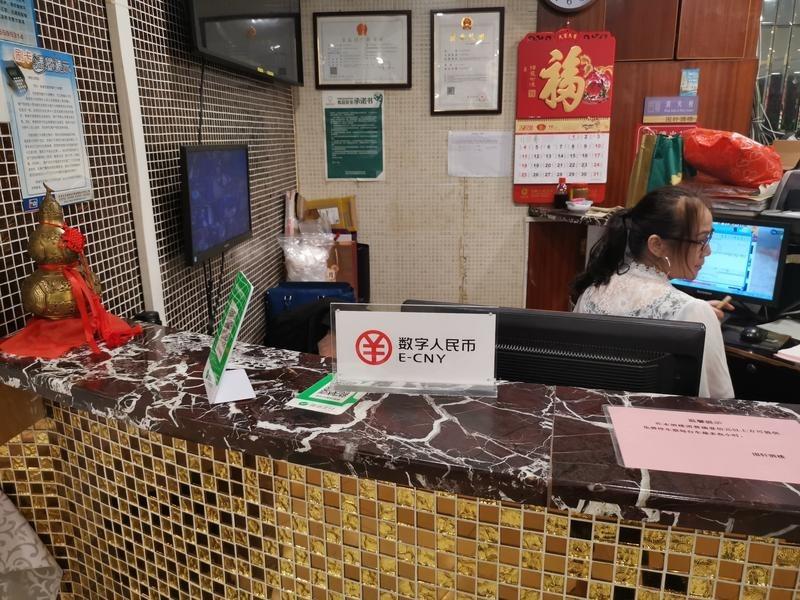 In this undated photo, a notice in a Shenzhen restaurant informs customers that they can use digital renminbi to pay for their meals. (CHAI HUA / CHINA DAILY)
In this undated photo, a notice in a Shenzhen restaurant informs customers that they can use digital renminbi to pay for their meals. (CHAI HUA / CHINA DAILY)
Global central banks are gearing up to develop their digital sovereign currencies while China is making progress in this aspect.
China announced in 2019 that it would launch its Digital Currency/ Electronic Payment (DC/EP) project to create digital renminbi, a digital form of fiat money
According to a survey conducted by the Bank for International Settlements in January 2020, 80 percent of the 66 responding central banks were engaging in work in relation to central bank digital currencies, with half looking at both wholesale and retail purposes CBDCs.
More notably, about 40 percent have progressed from conceptual research to the experimental or proof-of-concept stage; plus, another 10 percent have commenced their pilot projects.
Wholesale-based CBDCs are mainly used for very large money transactions among banks and other relevant institutions, whereas retail-based CBDCs have a focus on the needs of the public individuals, being used for daily consumption.
ALSO READ: 'Offline payment services' added to digital currency trials
China announced in 2019 that it would launch its Digital Currency/ Electronic Payment (DC/EP) project to create digital renminbi, a digital form of fiat money.
In August last year, internal pilot tests were carried out in Shenzhen, Chengdu, Suzhou, Xiong’an and the future Winter Olympic venue in Beijing. One month later, Xiong’an – one of the pilot cities for e-CNY – officially announced its plan to explore the use of digital currencies for cross-border transactions.
e-CNY is the digitalized version of the physical cash of renminbi and a substitute for money in circulation. It is legal tender fully backed by the People’s Bank of China so that there will be no speculation on e-CNY value.
Commercial banks pay 100 percent of the reserves to the PBOC and then the PBOC issues e-CNY to commercial banks and other commercial operating agencies. Then these banks and agencies distribute e-CNY to the public when they open digital wallets at these commercial institutions.
e-CNY will be supported by infrastructure covering registration (production, circulation, auditing and the cancellation of digital money), authentication processes in which e-CNY transaction data is centralised, controlled by and only visible to the PBOC, and analysis of transaction data to gauge payment behavior and money-laundering activities.
READ MORE: Digital currency gets high marks in Shenzhen debut
Digital renminbi differs from existing cryptocurrencies because it is legal tender, centralized, and not anonymous. The digital version of the yuan could help China bring its unbanked population into the mainstream economy, accelerate the move to a cashless society, and internationalize the renminbi’s use in trade settlements.


